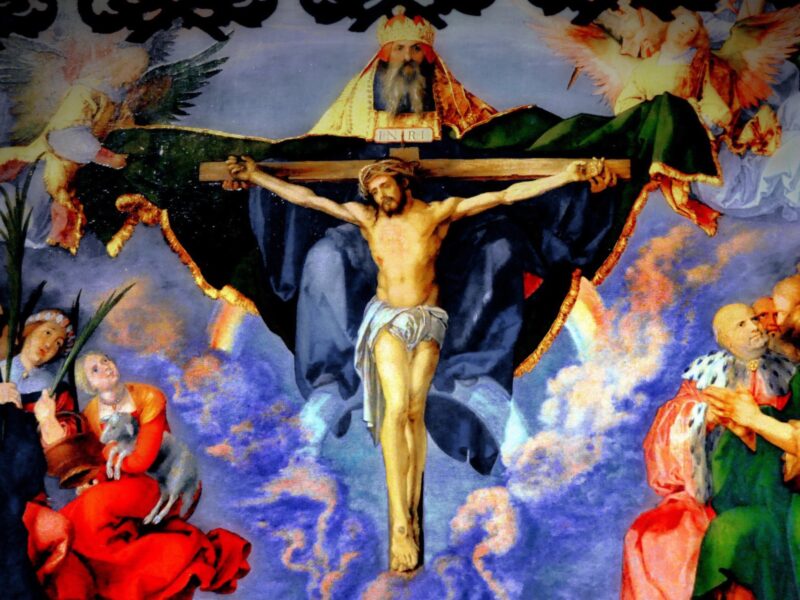
Woman!
Second Sunday of the Year. Fr Aidan Nichols considers the role of Our Lady in the story of the wedding at Cana.
‘On the third day there was a wedding at Cana in Galilee.’ In context, then, the third day after leaving Judaea, way down south, where Jesus had been involved in the movement associated with his cousin John the Baptist and had undergone the ritual descent into the waters, to extraordinary effect, at John’s hands.
The journey on foot up the Jordan valley to Galilee takes about two days, so this fits well. Cana – Khirbet Qana – lies nine miles north of Nazareth on the road into the hills, away from the Sea of Galilee, so presumably there was time to call and collect our blessed Lady. For as we read, ‘The mother of Jesus was there, and Jesus himself and his disciples had also been invited to the celebration’. In this period, it seems, Jewish weddings took place on Wednesdays and the rejoicing lasted until the Wednesday following.
Unsurprisingly, the wine ran out (perhaps some of those invited, owing to poverty, had failed to contribute to the supply): a humiliation, a minor disaster, for the bridegroom. Mary draws her Son’s attention to the burning cheeks of the newly wed, an expression, we can suppose, of an instinctive natural courtesy. ‘They have no wine.’ Her Son apparently rebuffs her. Was it for domestic situations such as this that so soon before he had been consecrated for his mission as the Christ, the Lamb of God, the Suffering Servant who was to actualize the Messianic promises? His hour had not yet come, he tells her, replying with a seeming roughness, ‘Woman’.
Considered as address from a son to a mother, that way of talking to her has no extant parallel in Hebrew or Greek. That should alert us to the fact that something more is going on here than meets the eye. The phrase ‘my hour’ has in this Gospel-book a technical significance: it means the time of the Passion, Death, Resurrection, and Ascension of Christ. In particular, it means the moment of the Crucifixion, the power and glory hidden in the Cross being manifested in the Resurrection. And at the Cross the Son will speak to his mother in the same way as he does at Cana. He will look down from the Cross and call out, ‘Woman’ – not just to gain her attention, but to tell her she will be the mother and protectress of the infant Church. She is the Mother of the Messiah, and her place now is in the struggle against the satanic serpent as prophesied in Genesis to the Mother of all the living: she whom the Fall narrative indeed calls ‘the Woman’, the first Eve. Mary appears at the Cross’s foot to be given new offspring in the shape of the beloved disciple who stands here for all Christians: it will be her task to protect these offspring in the ongoing contest between Satan and the followers of Christ.
So back to Cana, then: there is no rudeness here, but a relativisation of the significance of a domestic problem in the light of the destiny she is to share with her Son in the plan of God.
Nevertheless, he agrees to do something. She says to the waiters, ‘Do whatever he tells you’. The spiritual assurance the grace of her Immaculate Conception gives her allows her to rely on a response. The generosity of God can embrace things as small as domestic disappointments as well as things as large as the salvation of the world, and in any case this little domestic drama is, as it happens, filled with symbolic possibilities which the Messiah now exploits in his first ‘sign’. The result is one hundred and twenty gallons of what a connoisseur found quite excellent wine.
The Church of course accepts the possibility of miracle. The universe, we say, is not a completely closed system, but is open to its Creator at a variety of points. It should be said, however, that the miraculous element is not in itself the climax of this story. The climax is the disciples’ perception of what the miracle symbolizes. The abundance of this superb wine symbolizes the unheard of, superabundant, generosity of God that is now, in Jesus, to be laid bare. This overwhelming generosity became incarnate in him, and the story marks the moment when the penny began to drop. ‘What Jesus did at Cana in Galilee marked the beginning of his signs; thus he revealed his glory and his disciples believed in him.’
Readings: Isaiah 62:1-5 | 1 Corinthians 12:4-11 | John 2:1-11



Maria Laidlaw
Such an influential mother! What a Man-God who follows His own 4th commandment and honours his mother, despite being her creator!
Sheen takes this further by linking Cana to the finding in the temple: first she withdrew Him from public life (and He was subject to her & Joseph), then she invited him to take up His public life (18 years later).
Joe Turner
Fr. Aidan is such a treasure. Thank you so much.